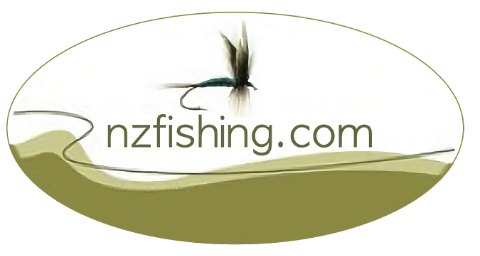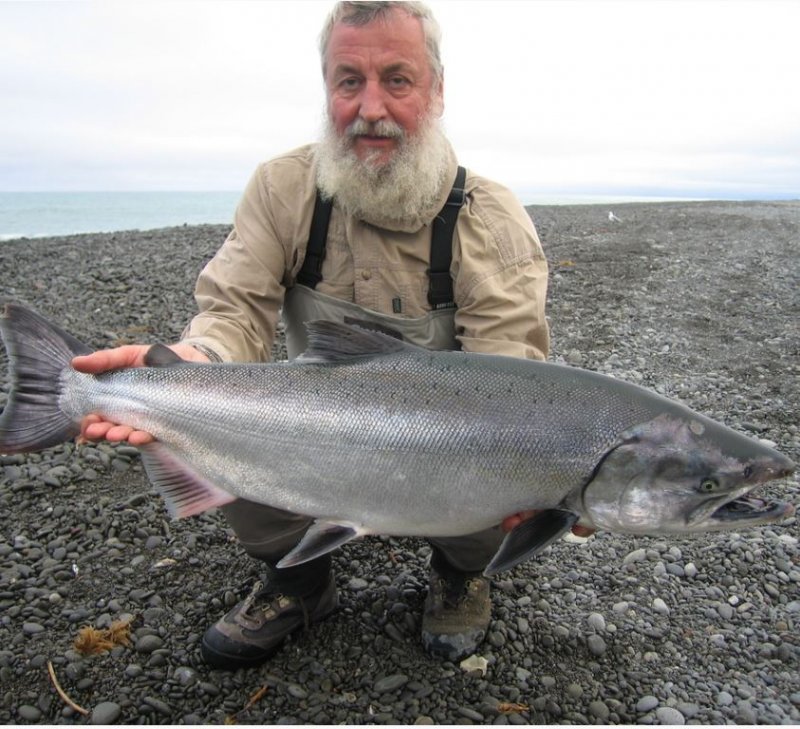| Water Conservation Order |
The Rakaia River is a celebrated salmon fishery. The Rakaia is also known for its large wrybill population. Other important bird species known to be found in the river bed are the black-fronted tern and banded dotterel. The Rakaia WCO was passed in 1988 but TrustPower has applied to amend parts of the order for the Lake Coleridge Project.
To read the full legislation document for the WCO applied to this waterway click here |
| Fish type |
The Rakaia is generally fished for salmon, though it also contains sea-run brown trout and resident populations of rainbow trout (upriver) and of brown trout. |
| Situation |
The Rakaia River is situated 60km south-east of Christchurch. It rises in the Southern Alps and flows east across the Canterbury Plains before entering the Pacific Ocean south of Lake Ellesmere. |
| Maps |
Upper Rakaia access map
Lower Rakaia access map
|
| Check conditions |
View the MetService weather forecast
View the river flow.
Salmon fishing in the Rakaia is most productive when the river flow falls to less than 180 cumecs immediately after a fresh. |
| Description |
The Rakaia is a large braided snow-fed river with an unstable shingle bed. It is glacier feed meaning that the river usually has some colour in it from the silt it carries (this is particularly true during the spring melt). It is liable to flooding at any time of the year and often, after a flood, will have changed its course.
It features good runs of salmon from November to March and has a good resident population of trout. Trout fishing is best in the many tributaries however where large fish can be stalked in small clear waters or by chasing the good population of sea-run trout in the lower reaches. |
| Upper reaches (above SH77) |
Description
The salmon fishing in the upper reaches is best between January and March. There is a good open section of the river to fish with several Fish and Game signposted areas showing angler access points.
Trout fishing is good, especially in the pools and more stable reaches.
Fish numbers and size
Good populations of river resident trout. The salmon in the upper reaches may not be in top condition.
Access
A boat is needed to fish the gorge. Ten kilometres beyond the gorge, the river opens up and there is good access, particularly from Double Hill Run Road.
See the upper Rakaia access map. |
| Middle reaches (SH1 to SH77) |
Description
Salmon will often slow down and rest in sections of this part of the river. Anglers need to move however looking for fish as they so anglers need to keep on the move after fishing a pool through a couple of times. Jet boats, drift boats and ATVs are popular.
Fish numbers and size
Good populations of river resident trout. Salmon can be also found in many pools as they head up river.
Access
The most popular access points are from the SH1 bridge and the SH72 bridge, both for foot anglers and for launching boats. Smaller access tracks lead off roads running up either side of the river: Rakaia Terrace and the Rakaia-Methven Road.
Good water can usually be found from Lowers Cutting, Sleemans Road, Steels Road and Te Pirita Road.
See the lower Rakaia access map. |
| Lower reaches (From the mouth to SH1) |
Description
The lower reaches are the most popular for anglers and fish best in December and January, though fish continue to run until the end of March.
Salmon fishing is best after a flood in the first days that the river is clear. As the fish move through quickly, its best to wait for the fish once you've found a good stretch of water.
Fish numbers and size
Good numbers of sea run trout
Access
Access to the lower reaches is best on the south side, from various tracks leading off Acton Road, such as Dobbins Ford, Griggs Road and Maginisses.
See the lower Rakaia access map. |
| The mouth and lagoon |
All three areas – the surf, gut and tidal lagoon - are prime fishing areas with the mouth and lagoon being popular for both salmon and trout.
Salmon
Mid January to mid March are the best months for salmon at the mouth. Surf salmon fishing is variable; the best time to try is when the sea is calm and clear. Try fishing the gut mid way through an incoming tide on a slow current.
Trout
November to February are the months for sea run trout fishing, especially after a fresh when the river is discoloured. The best time is the last hour of daylight, especially after a warm day. The trout feed on smelt in shallow fast-flowing riffles, so toward low tide when the flow is greater is ideal.
Access
Access at the mouth and lagoon is through the hut settlements on either side of the river. The mouth is highly mobile; it can be anything from one to four kilometres from the end of the road. A boat or ATV are very useful.
See the lower Rakaia access map. |
Salmon fishing
methods |
In the fast-flowing Rakaia, spinning is most effective when you are in pursuit of salmon.
At the river mouth or up river: In most situations, use:
- a medium/heavy actioned rod, 2-2.5m in length
- a fixed or free spool reel capable of holding 200m of 7-10kg line
- in the river, use a Zed spinner or Colarado Spoon
Fish the spinner along the bottom in pools that have slow water adjacent or near the main flow.
Surf casting: Fish midway in the water column using:
- a long rod
- a high speed reel
- a heavy lure designed for long distance casting, such as the ticer or slice, or a Zed spinner in weights up to 40 grams. |
| Trout fishing methods |
Sea run brown trout
Use either:
- a heavy fly rod and fast sinking line, or
- a lure rod, mono-filament line and lead sinker, and
- streamer flies that resemble smelt such as Parsons' Glory, Hopes Silvery, or Yellow Rabbit in sizes 2-6.
River resident trout
Blind fishing with either fly or spinner works well. In the headwaters, use heavily weighted nymphs. |
| Recommended trout lures |
Nymphs: Hare and Copper, Green Stonefly, Halfback, Pheasant Tail, Black Nymph
Dry flies: As there are few insect hatches and little surface activity this is not a known dry fly river. In late summer in the upper reaches it may be worthwhil trying a Green Beetle, Cicada or Hopper
Streamers: Hamill's Killer, Mrs Simpson , Parson's Glory, Hopes Silvery, Yellow Rabbit, Woolly Bugger or at night a Black Marabou or Black Fuzzy-Wuzzy
Spinners: Use Zed spinner, Colarado Spoon, Tasmanian Devil or Black Toby |
| High country lakes |
The Rakaia high country lakes are:
- Lake Coleridge
- Lake Evelyn
- Lake Selfe
- Lake Henrietta
- Lake Ida and Little Ida
- Lake Catherine, also known as Lake Monck
- Lake Lilian
- Lake Georgina
- Lake Lyndon
- Lake Rubicon |
| Tributaries |
Tributaries to the Rakaia River include the:
- Wilberforce River
- Mathias River
- Glenariffe Stream |
| Regulations (1) |
| Applicable to |
Rakaia River above the Coleridge Tailrace confluence (white posts mark the boundary) |
| Region |
North Canterbury regulations |
| Season |
1 Oct - 31
Mar |
| Methods |
Artificial fly, spinner |
| Bag limit |
Trout: 2
Salmon: 0 |
| Size limit (cm) |
30 cm |
| Regulations (2) |
| Applicable to |
Rakaia River below the Coleridge Tailrace confluence |
| Region |
North Canterbury regulations |
| Season |
Trout: 1 Oct- 30 Sept
Salmon: 1 Oct - 31 March |
| Methods |
All year: Artificial fly, spinner, bait.
Bait fishing is permitted for trout only. |
| Bag limit |
Trout: 2
Salmon: 1 |
| Size limit (cm) |
30 cm |
|
|
|
|
|
|
|
|
|
|
|
|
|
|
|
|
|
|
|
|
|
|
|
|
|
|



